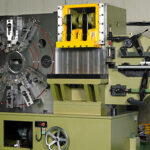There are different types of electrocardiography (ECG) machines, and each has its own special features. EKG machines can vary in size and functionality, but all work in essentially the same way in checking for cardiac abnormalities. They just fundamentally differ in the extent of data they capture, the data they show and record, their mobility, and their featured applications.
ECG machines are predominantly used in medical diagnostic testing to monitor the patient’s heart rate, particularly the electrical signals produced. They are usually referred to by the number of leads created; in other words, the number of electrical signals they can monitor at a time.
12-Lead ECG

The 12-lead ECG is the standard ECG machine used for medical diagnostic testing. It uses 10 electrodes with color-coded wires. Six of the electrodes are placed on the chest, and the other 4 are placed on each of the limbs. This type of ECG machine can provide a printed record of the ECG, unlike other types. A 12-lead ECG records 12 different electrical signals at around the same time. They are used to diagnose heart attacks and heart murmurs. Symptoms that frequently call for the use of a 12-lead ECG include chest pain, fainting, or seizures.
5-Lead ECG
A 5-lead ECG machine uses 5 electrodes, 4 of which are placed on each of the limbs and 1 on the chest. It is usually used for continuous monitoring, like during a major surgical procedure or while a patient is being transported in an ambulance. This does not provide ECG printouts, and may or may not store a permanent record of the ECG readings.
3-Lead ECG
A 3-lead ECG machine uses 4 electrodes placed on each of the limbs, which is enough to produce adequate data on heart rhythm monitoring. Like the 5-lead ECG, it does not give out a printed copy of the ECG recording because it is mainly used for continuous monitoring of heart rhythm. A 3-lead ECG can also be used jointly with other cardiac diagnostic tests, such as an echocardiogram.
Portable Handheld ECG Monitors

Portable handheld ECG monitors are the smallest ECG machines in the market today. In spite of their portable and handheld size, they can display and record heart rate like their larger counterparts. They can catch critical data that is helpful in improving heart disease management, and they can give an automatic evaluation in as fast as 30 seconds. Users need not place corded electrodes on their body with this type of ECG. They have a built-in electrode/s, so all you need to do is press a button or two on the device and it will start recording. They can identify at least 9 kinds of arrhythmias.
Wireless ECG
Wireless ECGs are similar to a standard ECG machine, but without the wires. The electrodes used have wireless units that transmit data to the computer or telemetry station. A wireless ECG provides more functionality and comfort for patients, who wouldn’t have to worry about wires attached to their bodies. It can be beneficial in acquiring basic information on a patient with a heart condition, monitor a patient in a hospital, or track heart rhythm during surgery.


